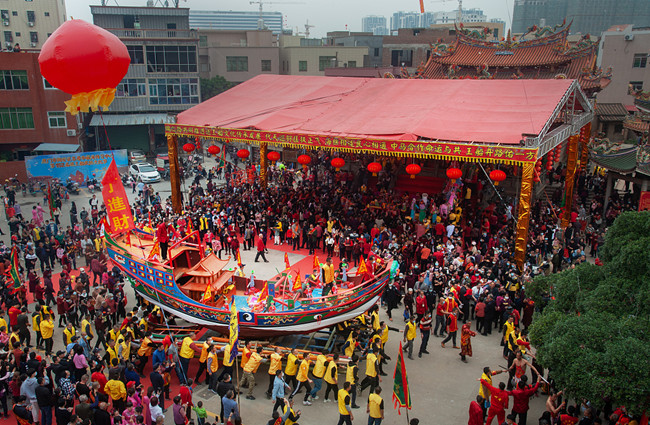Wangchuan granted UNESCO status

A Wangchuan ceremony in Xiamen, Fujian province. [Photo/VCG]
Two new entries from China, Taijiquan and the Wangchuan ceremony, were added to UNESCO's intangible cultural heritage list on Thursday.
The two items were added to the list during the 15th session of the Intergovernmental Committee for Safeguarding Intangible Cultural Heritage, which is being held virtually, from Monday until Saturday, and hosted by Jamaica.
Taijiquan, also known as tai chi, is a traditional physical practice characterized by relaxed, circular movements that works in harmony with breath regulation and the cultivation of a righteous and neutral mind.
The wangchuan ceremony, or Ong Chun, was jointly put forward for UNESCO intangible cultural heritage status by China and Malaysia. The ceremony and related practices are rooted in folk customs of worshipping Ong Yah, a deity believed to protect people and their lands from disasters.
Developed in the south of Fujian province between the 15th and 17th centuries, the element is now centered in the coastal areas of Xiamen and Quanzhou, as well as in the Chinese communities in Melaka, Malaysia. Performances, including local opera genres, dragon and lion dances, and puppet shows, among many others, are presented during the ceremony.
The element evokes the historical memory of ancestors' ocean-going, reshapes social connections when confronted with emergencies such as shipwrecks, and honors the harmony between man and the ocean. It also bears witness to the intercultural dialogue among communities, according to UNESCO.
China now has 42 entries in UNESCO''s Representative List of the Intangible Cultural Heritage List of Humanity, the most of any country in the world.
